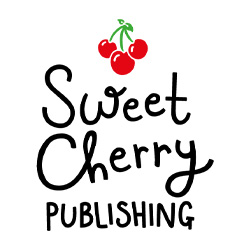A Guide to Reading Levels
Accelerated Reader™ puts students in the driver’s seat. Teachers can guide students, while engaging quizzes and activities help hone students’ reading skills with authentic practice—encouraging growth.
How does it work?
Accelerated Reader™ has quizzes on more than 200,000 books, ensuring students never run out of choices. Students get to read a book of their choice, either in class, at home, or out and about in the community. Once they finish a book, students take a short quiz on what they’ve read. Teachers can use quiz results to set goals, monitor students’ continued progress, and personalise lesson plans.
What are AR™ Points?
AR™ Points are computed based on the difficulty of the book (ATOS readability level) and the length of the book (number of words).
What are ATOS™ Book Levels (BLs)?
For example, a book level of 4.5 means the text could likely be read independently by a student whose reading skills are at the level of a typical Year 4 student during the fifth month of school.
What are Interest Levels (ILs)?
Interest Levels are based on content (a book’s themes and ideas) and indicate for which age group a book is appropriate. Content appropriateness is grouped into four categories:
- LY = Lower Years, ages 5-8
- MY = Middle Years, ages 9-13
- MY+ = Middle Years Plus, ages 12+
- UY = Upper Years, ages 14+
The Lexile® Framework for Reading is a scientific approach to measuring reading ability and the text demand of reading materials.
A Lexile® measure represents both the complexity of a text, such as a book or article, and an individual’s reading ability. Lexile® measures are expressed as numeric measures followed by an “L” (for example, 850L), and are placed on the Lexile® scale.
The Lexile® scale is a developmental scale for measuring reader ability and text complexity, ranging from below 0L for beginning readers and beginning reader materials to above 1600L for advanced readers and materials.
Knowing the Lexile® measures of both a reader and a text helps to predict how the text matches the reader’s ability – whether it may be too easy, too difficult or just right. All Lexile®products and services rely on the Lexile® measure and Lexile® scale to match readers with materials, activities and text.
What are Lexile® measures?
A “Lexile® measure” is represented by a number followed by an “L” (for example, 850L).
What is the Lexile® scale?
The Lexile® scale ranges from below 0L for those learning to read and beginner materials to above 1600L for more advanced level readers and texts.
What is the Lexile® reading range?
The Lexile® reading range spans from 100L below to 50L above an individual’s Lexile® reading measure, and is the optimal range for successful reading practice.
Guided Reading Levels
Guided reading is a teaching approach designed by teaching specialists Gay Su Pinnell and Irene C. Fountas in the 90s. A teacher will guide a group of children who are at a similar level in their reading skills to develop independent strategies to approach new and increasingly challenging texts.
What are Guided Reading Levels?
Guided Reading Levels range alphabetically from A to Z, with level A representing the lowest level and level Z the highest. As the levels progress, the books become more difficult.
Books are assigned Guided Reading Levels based on the following 10 categories:
- Genre/Form: the type of book
- Text Structure: how the text is put together
- Content: the subject matter
- Themes and Ideas: the messages the author is communicating
- Language and Literary Features: the writing techniques employed by the author
- Sentence Complexity: how challenging the syntax in each sentence is
- Vocabulary: the frequency and complexity of new words
- Words: the complexity of recognising and understanding the text
- Illustrations: the consistency of comprehending any images to the words on the page
- Book and Print Features: the length, size and layout of the book; also includes tools like a table of contents and a glossary.
UK National Curriculum Key Stages and US K-12 Grade Placement
| Age | UK School Year | UK Key Stage | US School Grade | US School Level |
|---|---|---|---|---|
| 4-5 years | Reception/4+ | Key Stage 1 | Pre-Kindergarten | Early Childhood |
| 5-6 years | Year 1 | Kindergarten | ||
| 6-7 years | Year 2 | 1st Grade | Lower School | |
| 7-8 years | Year 3 | Key Stage 2 | 2nd Grade | |
| 8-9 years | Year 4 | 3rd Grade | ||
| 9-10 years | Year 5 | 4th Grade | ||
| 10-11 years | Year 6 | 5th Grade | Middle School | |
| 11-12 years | Year 7 | Key Stage 3 | 6th Grade | |
| 12-13 years | Year 8 | 7th Grade | ||
| 13-14 years | Year 9 | 8th Grade | ||
| 14-15 years | Year 10 | Key Stage 4 | 9th Grade (Freshman) | High School |
| 15-16 years | Year 11 | 10th Grade (Sophomore) | ||
| 16-17 years | Year 12 | Key Stage 5 | 11th Grade (Junior) | |
| 17-18 years | Year 13 | 12th Grade (Senior) |


